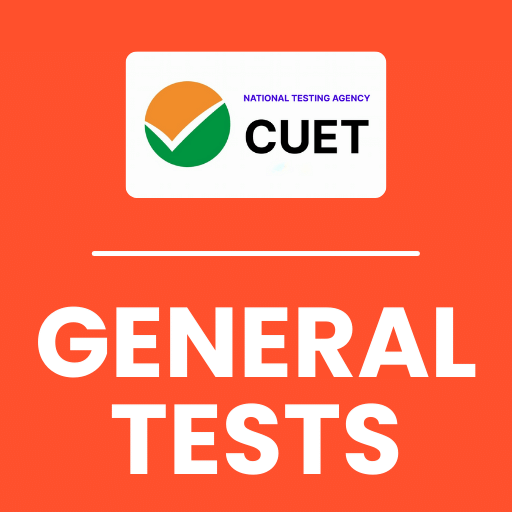Best Study Material for CUET Exam
CUET Exam > CUET Notes > CUET UG Mock Test Series 2025 > CUET Syllabus: Political Science
CUET Syllabus: Political Science | CUET UG Mock Test Series 2025 PDF Download
| Download, print and study this document offline |
Please wait while the PDF view is loading
Page 1
POLITICAL SCIENCE-323
Political Science-
323
Syllabus for Class 12
Page 2
POLITICAL SCIENCE-323
Political Science-
323
Syllabus for Class 12
Political Science – 323
Politics in India Since Independence
1. The era of One-Party Dominance: First three general elections, nature of Congress
dominance at the national level, uneven dominance at the state level, coalitional nature
of Congress. Major opposition parties.
2. Nation-Building and Its Problems: Nehru’s approach to nation-building: Legacy of
partition: the challenge of ‘refugee’ resettlement, the Kashmir problem. Organization
and reorganization of states; Political conflicts over language.
3. Politics of Planned Development: Five- year plans, expansion of state sector, and
the rise of new economic interests. Famine and suspension of five-year plans. Green
Revolution and its political fallouts.
4. India’s External Relations: Nehru’s foreign policy. Sino-Indian war of 1962, Indo-Pak
war of 1965 and 1971. India’s nuclear programme and shifting alliances in world
politics.
5. Challenge to and Restoration of Congress System: Political succession after Nehru. Non-
Congressism and electoral upset of 1967, Congress split and reconstitution, Congress’
victory in 1971 elections, politics of ‘garibi hatao’.
6. Crisis of the Constitutional Order: Search for ‘committed’ Bureaucracy and Judiciary.
Navnirman movement in Gujarat and the Bihar movement. Emergency: context,
constitutional and extra-constitutional dimensions, resistance to emergency. 1977 elections
and the formation of the Janata Party. Rise of civil liberties organizations.
7. Regional Aspirations and Conflicts: Rise of regional parties. Punjab crisis and the anti-
Sikh riots of 1984. The Kashmir situation. Challenges and responses in the North East.
8. Rise of New Social Movements: Farmers’ movements, Women’s movements,
Environment, and Development-affected people’s movements. Implementation of
Mandal Commission report and its aftermath.
9. Democratic Upsurge and Coalition Politics: Participatory upsurge in the 1990s. Rise of
the JD and the BJP. The increasing role of regional parties and coalition politics. UF
and NDA governments. Elections 2004 and UPA government.
10. Recent Issues and Challenges: Challenge of and responses to globalization: new
economic policy and its opposition. Rise of OBCs in North Indian politics. Dalit politics
in the electoral and non-electoral arena. Challenge of communalism: Ayodhya dispute,
Gujarat riots.
Page 3
POLITICAL SCIENCE-323
Political Science-
323
Syllabus for Class 12
Political Science – 323
Politics in India Since Independence
1. The era of One-Party Dominance: First three general elections, nature of Congress
dominance at the national level, uneven dominance at the state level, coalitional nature
of Congress. Major opposition parties.
2. Nation-Building and Its Problems: Nehru’s approach to nation-building: Legacy of
partition: the challenge of ‘refugee’ resettlement, the Kashmir problem. Organization
and reorganization of states; Political conflicts over language.
3. Politics of Planned Development: Five- year plans, expansion of state sector, and
the rise of new economic interests. Famine and suspension of five-year plans. Green
Revolution and its political fallouts.
4. India’s External Relations: Nehru’s foreign policy. Sino-Indian war of 1962, Indo-Pak
war of 1965 and 1971. India’s nuclear programme and shifting alliances in world
politics.
5. Challenge to and Restoration of Congress System: Political succession after Nehru. Non-
Congressism and electoral upset of 1967, Congress split and reconstitution, Congress’
victory in 1971 elections, politics of ‘garibi hatao’.
6. Crisis of the Constitutional Order: Search for ‘committed’ Bureaucracy and Judiciary.
Navnirman movement in Gujarat and the Bihar movement. Emergency: context,
constitutional and extra-constitutional dimensions, resistance to emergency. 1977 elections
and the formation of the Janata Party. Rise of civil liberties organizations.
7. Regional Aspirations and Conflicts: Rise of regional parties. Punjab crisis and the anti-
Sikh riots of 1984. The Kashmir situation. Challenges and responses in the North East.
8. Rise of New Social Movements: Farmers’ movements, Women’s movements,
Environment, and Development-affected people’s movements. Implementation of
Mandal Commission report and its aftermath.
9. Democratic Upsurge and Coalition Politics: Participatory upsurge in the 1990s. Rise of
the JD and the BJP. The increasing role of regional parties and coalition politics. UF
and NDA governments. Elections 2004 and UPA government.
10. Recent Issues and Challenges: Challenge of and responses to globalization: new
economic policy and its opposition. Rise of OBCs in North Indian politics. Dalit politics
in the electoral and non-electoral arena. Challenge of communalism: Ayodhya dispute,
Gujarat riots.
Contemporary World Politics
1. Cold War Era in World Politics: Emergence of two power blocs after the Second World
War. Arenas of the Cold War. Challenges to Bipolarity: Non-Aligned Movement, the
quest for new international economic order. India and the Cold War.
2. Disintegration of the ‘Second World’ and the Collapse of Bipolarity: New entities in
world politics: Russia, Balkan states, and, Central Asian states, Introduction of democratic
politics and capitalism in post-communist regimes. India’s relations with Russia and other
post-communist countries.
3. US Dominance in World Politics: Growth of unilateralism: Afghanistan, first Gulf War,
response to 9/11 and attack on Iraq. Dominance and challenge to the US in economy
and ideology. India’s renegotiation of its relationship with the USA.
4. Alternative Centres of Economic and Political Power: Rise of China as an economic
power in post- Mao Era, creation, and expansion of European Union, ASEAN. India’s
changing relations with China.
5. South Asia in the Post-Cold War Era: Democratisation and its reversals in Pakistan and
Nepal. Ethnic conflict in Sri Lanka. Impact of economic globalization on the region.
Conflicts and efforts for peace in South Asia. India’s relations with its neighbours.
6. International Organisations in a Unipolar World: Restructuring and the future of the UN.
India’s position in the restructured UN. Rise of new international actors: new international
economic organizations, NGOs. How democratic and accountable are the new institutions
of global governance?
7. Security in Contemporary World: Traditional concerns of security and politics of
disarmament. Non-traditional or human security: global poverty, health, and education.
Issues of human rights and migration.
8. Environment and Natural Resources in Global Politics: Environment movement and
evolution of global environmental norms. Conflicts over traditional and common property
resources. Rights of Indigenous People. India’s stand-in global environmental debates.
9. Globalization and Its Critics: Economic, cultural and political manifestations. Debates on
the nature of consequences of globalization. Anti-globalization movements. India is an
arena of globalization and struggles against it.
.
Read More
|
39 docs|148 tests
|
FAQs on CUET Syllabus: Political Science - CUET UG Mock Test Series 2025
| 1. What topics are covered in the CUET Political Science syllabus? |  |
| 2. How can I prepare for the Political Science section of the CUET? |  |
Ans.To prepare for the Political Science section of the CUET, students should start by thoroughly reviewing the syllabus and recommended textbooks. Regularly reading newspapers and political journals can help in understanding current affairs. Additionally, practicing past year question papers and taking mock tests can enhance exam readiness.
| 3. Is there a recommended reading list for CUET Political Science? |  |
Ans.Yes, a recommended reading list for CUET Political Science generally includes textbooks like "Indian Government and Politics" by Shriram Maheshwari, "Political Theory" by Rajeev Bhargav, and "International Relations" by Pavneet Singh. Students should also refer to the NCERT textbooks for foundational concepts.
| 4. Are there any specific skills needed for the CUET Political Science exam? |  |
Ans.Candidates should have strong analytical and critical thinking skills to interpret political concepts and case studies. Effective writing skills are also important for articulating thoughts clearly in essay-type questions. Additionally, students should be adept at understanding and analyzing graphs or charts related to political data.
| 5. What is the exam pattern for the Political Science section of the CUET? |  |
Ans.The exam pattern for the Political Science section of the CUET usually consists of multiple-choice questions (MCQs) and descriptive questions. The MCQs test the students' knowledge of key concepts, while the descriptive questions assess their ability to analyze and explain political phenomena in depth.
Related Searches

























